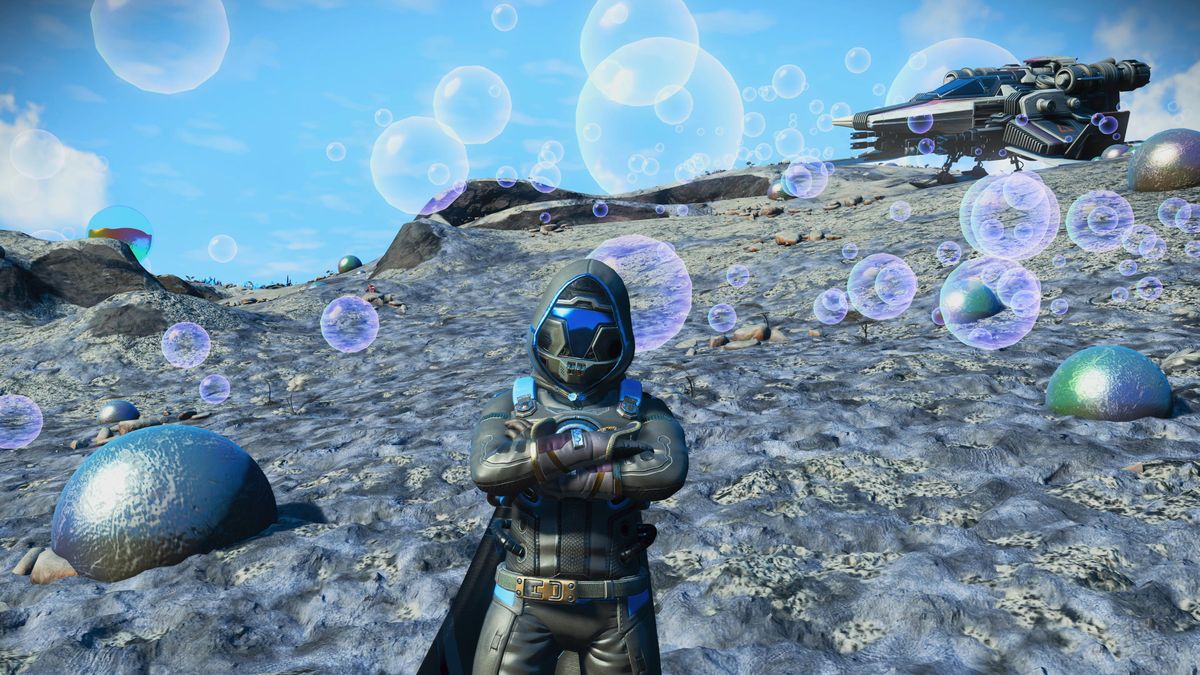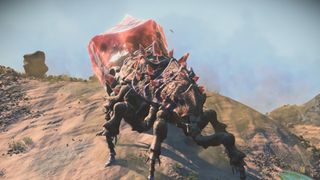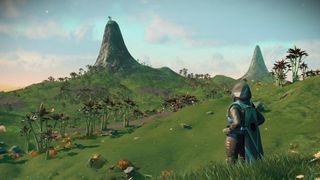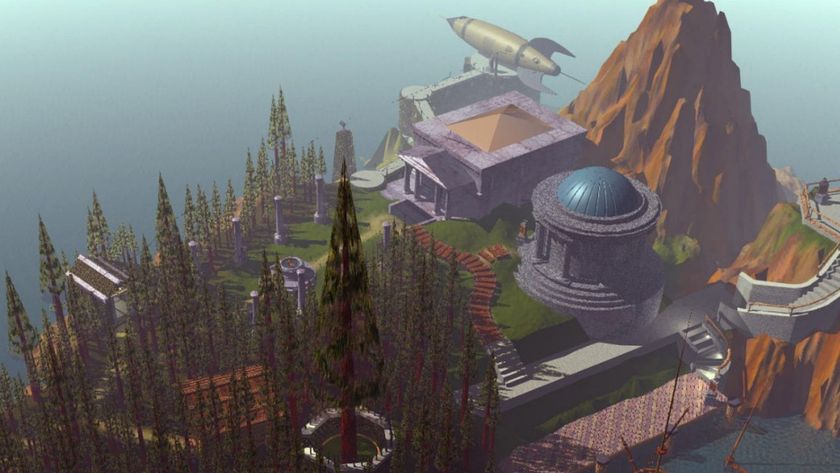No Man’s Sky’s 5.0 update has finally convinced me to explore its universe
Opinion | Stop and smell the procedurally generated roses

When No Man’s Sky first launched all the way back in 2016, its main selling point was limitless exploration, across an impossibly vast procedurally generated world. In theory, the universe was built for players to comb through meticulously, logging discoveries and charting the unknown while being gently directed by an overarching, albeit fairly slight main plot. In practice however, planet diversity was limited, with very little reason to hop from planet to planet. Besides brief trips to farm resources that rarely warranted further interaction, I never quite engaged with what was, at the time, the game’s primary hook. Since then, though, a frankly dizzying number of updates have added everything from base building to fleet management and farming.
No Man’s Sky has always kept me busy, but over the years I’ve focused my time on building factories and trading resources, with the primary goal of inflating my in-game bank account. With the arrival Of No Man’s Sky Worlds Part 1 (version 5.0), planets have been fine-tuned, with a focus on increasing diversity, and atmospheric effects. While it may not seem like the most transformative update from the patch notes, Worlds Part 1 has finally tipped the scales for me, turning me into the galactic explorer the game always wanted me to be.
Star trekkin'

Update 5.0 arrived on some platforms late last week (it’s yet to launch on Xbox and Nintendo platforms), boasting new cloud technology, improved water effects and gorgeous floating islands to discover. Being such a planet-focused offering, the best way to take in the new features is to hop from world to world, drawing players back into the loop that was at No Man’s Sky’s core at the very beginning.
It’s the clouds that stand out initially, adding yet another layer of visual flair to what remains No Man’s Sky’s most impressive tech-showcase. Over the years, the best way to show a new player what makes No Man’s Sky so special has been to have them take off from a planet’s surface,and fly seamlessly into space. Now, there’s a dense layer of clouds between the ground and the sky, with slight differences in density and shape between planets. It might not sound like much, but I’ve become completely obsessed with flying my ship through the upper atmosphere, watching each planet’s distinct light palette warp and shift as I duck and crest between cirrus and nimbus clouds.
Ocean planets, previously sources of frustration for me due to their lack of places to anchor your ship while exploring, have been completely opened up thanks to the aquatic landing jets. Now, you can land your ship on water, allowing you to use it as a hub to return to as you map and uncover the depths that surround it. You’ll want to head to the coasts as soon as you find a planet with large bodies of water, given the complete overhaul to water effects. Waves build and swell, reacting to the new wind effects that add drama to previously peaceful worlds. As storms roll in, waves can whip up into a frenzy, meeting improved volumetric fog to completely change the look and feel of a planet. Across the board, there’s an added ‘thickness’ to planets, an enhanced level of density and depth that simply was not there before. For the first time in a long time, each world feels completely unique, instilling the feeling that you truly are the first player to set foot there.
Thanks to a particularly rare upgrade to my Exosuit Scanner, I’m able to rake in credits just by scanning flora and fauna, an activity I usually reserve for when I’m grinding towards a big purchase. With the arrival of Worlds Part 1, I’m finding much more variety to the critters and creatures I’m spotting when exploring a planet. As part of the update, gigantic beetles can be seen thumping around on certain worlds. I even managed to find one carrying a huge pink crystal on its back, and managed to tame and then ride it around while I took in the sights. The biodiversity of No Man’s Sky has really come a long way in the last couple of years, shifting my relationship with the game’s discovery and documentation systems. Where previously I was in it for the money, I’m now genuinely curious to seek out each planet’s collection of plants and animals.

Plantlife can be spectacular on tropical and paradise planets: some look like huge glowing Catherine wheels, while others stand tall and resemble the huge redwoods found on Earth. Forests have been on my wishlist for a while now, and while we’re certainly a ways off them possibly being implemented, the introduction of megaflora in the latest update is a step in the right direction. The aforementioned wind effects come into play here too, animating long grass and leafy trees in ways that constantly catch the eye. Since the update arrived, most of my time in-game has been spent scouring grasslands, scaling mountains, scanner in hand ready to discover new species, and expand my catalogue.
Sign up to the 12DOVE Newsletter
Weekly digests, tales from the communities you love, and more
All of my recent planet exploration has even led me to something that’ll no doubt be the envy of many No Man’s Sky players: a perfect paradise planet. Green grass, blue skies, and a climate that rarely tries to kill me: I've finally found a worthy home after hundreds of hours of gameplay. Whether this is the result of the recent update’s tweaks, or merely a streak of good luck, I can’t be completely sure. I’ve been playing No Man’s Sky on and off since the very beginning, and with Worlds Part 1, I’ve found a planet that can go toe to toe with the ones shown off in the trailers.
Worlds Part 1 is a particularly granular, and delightfully nerdy update to the ever-expanding universe of No Man’s Sky. It’s tech-heavy, but focused on the subtleties of exploration, boosting atmospheric effects and adding some much welcomed liveliness to planets as a whole. The result feels much greater than the sum of its parts, and has managed to sell me on a portion of the game that I’d neglected as of late.
Looking for more? Here are 10 games like No Man's Sky that are worth checking out

Jake Green is a freelance writer with a love for Fortnite, Resident Evil and anything made by FromSoftware. Hailing from the overcast shores of Brighton in the United Kingdom, Jake can be found covering everything from features to guides content around the latest game releases. As seen on NME, Eurogamer, and VG247, Jake specializes in breaking games down into approachable pieces for guides, and providing SEO advice to websites looking to expand their audiences.

Pokemon Platinum's most obscure feature was a reward seemingly given to just 20 players lucky enough to participate in a complicated limited-time event with a lottery prize

37-year-old studio behind iconic PC game Myst and one of the longest-surviving indies in the world just laid off "roughly half the team"











